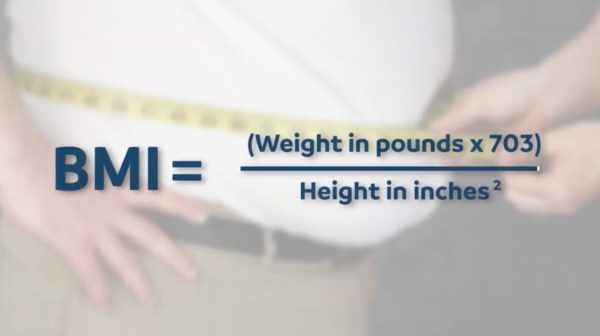Beyond BMI: Another Way To Help Gauge Your Weight

BMI (body mass index) isn’t the only calculation you should consider when evaluating if you’re overweight. Your BMI is a simple calculation, but is it a true picture of your overall health? Millennium Physician Group Cardiologist Brian Taschner, M.D., explains health and wellness come down to more than just your height and weight. “The problem with the BMI is it doesn’t necessarily take into account the amount of fat versus the amount of muscle or your bone density,” he clarifies.
You can determine your BMI by multiplying your weight in pounds by 703 and dividing it by your height in inches squared.
BMI Categories:
Below 18.5 = Underweight
18.5 – 24.9 = Normal or Healthy Weight
25.0 – 29.9 = Overweight
30.0 and Above = Obese
BMI measures body fat based on your height and weight. It’s the standard used to determine whether someone’s overweight, obese, or morbidly obese, which can increase your risk for certain diseases and health conditions, including heart disease.
“The real question is, does that really categorize your risk?” asks Dr. Taschner. “And ideally, again, if we can add a body composition to it, that’s even better. But a lot of times we can do the eye test and we see if our patients are more fit or more fat.”
If you aren’t able to measure your body composition, Dr. Taschner says something called the waist-to-hip ratio can offer insight into your risk for cardiovascular disease. “If someone has a big abdomen, if they have a lot of visceral fat or abdominal fat, that usually goes along with more of a high-fat obesity, rather than a high-muscle obesity.”
If you’re concerned or confused if your weight is affecting your health risks, you should see your primary-care provider to perform appropriate health assessments to evaluate your status.
Comments are closed.

 Your Safety is our Priority! Masks May Be Required at Millennium Offices.
Your Safety is our Priority! Masks May Be Required at Millennium Offices.